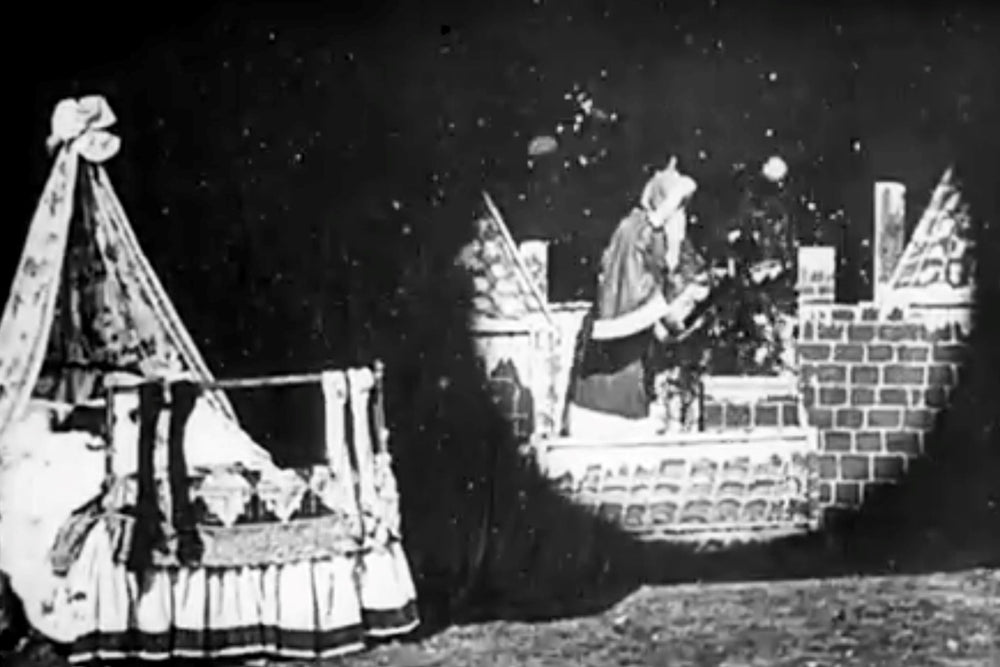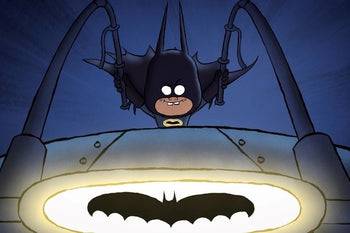Anyone who watches Hallmark or Lifetime during the holiday season can tell you there’s just something about Christmas movies that makes the viewers feel good. While not every holiday film will include a visit from Santa or a trip to the North Pole, there is usually some undefinable element of Christmas Spirit throughout each production. There’s a reason why we return to our favorites each year, and why so many classics have endured the test of time, even when there are well over 150 new holiday movies produced annually. But what about the first Christmas movie?
You may be trying to think back to the oldest movie you’ve seen on TV playing during the holiday season rotation. Holiday Inn, It’s A Wonderful Life, and A Miracle On 34th Street are all bonafide classics, but they came out in the 1940s and are nowhere near old enough. 1934’s March of the Wooden Soldiers came out just a few years after “talkies” became popular, and what’s a Christmas film without Christmas music, right? Well, there were dozens of holiday films produced before sound was even added to the picture, so we have to go further back. In fact, we must go all the way back before the turn of the century.

THE BIRTH OF CINEMA
In the 1880s, while Thomas Edison was working on the first motion picture camera in America, Louis Le Prince was working on his own in Europe. Le Prince even filmed a few shorts in 1888, one of which is regarded today as the oldest surviving motion picture. It is only a single 2.1 seconds-long shot of a horse running, but it opened a world of possibilities. Many of the films that followed similarly lacked narrative, but audiences still lined up to be amazed by this wondrous new creation. By 1896, the most popular “movie” was a 50 second clip of a train coming towards the camera by the Lumiere Brothers. Legend has it that audiences would go wild at screenings, sometimes ducking out of fear that the train was really coming towards them.

GEORGE ALBERT SMITH MAKES MOVIE MAGIC
Just two years later, George Albert Smith made the very first Christmas movie. Although only 76 seconds long, Santa Claus was a groundbreaking cinematic creation and an all-around technical marvel. Through innovative special effects, the short told the story of Santa’s visit to the home of two children on Christmas Eve. The silent film begins with two kids checking the chimney for Santa before their maid puts them to bed. As they fall asleep, the maid turns off the lights, and the walls of the room go dark. Projected on the right side of the screen is the image of the rooftop, as Santa appears and heads down the chimney. The projection fades and Santa magically appears in the children’s room to stuff their stockings full of presents. Santa waves goodbye, and magically disappears just as the kids awaken.
Like many of the filmmakers of his time, George Albert Smith was a stage magician, and turned to cinema as an extension of his act. Rather than document, his goal was to mystify. Smith pioneered a process known as “parallel action” to simultaneously show Santa on the rooftop and children waiting for him in their beds below. He further used a double exposure technique to make Santa magically appear from a chimney and disappear just as quickly. Audiences were likely shocked to see such magic on the big screen, and some may have thought it to be the real Santa. Likely to keep this illusion persisting, the actor who played Santa was uncredited; so, we unfortunately will never know who the first onscreen Santa really was.

THE SANTA CLAUS
At the time of production, Santa Claus was the most technically and conceptually sophisticated film ever made. George Albert Smith is now widely considered to be the father of film editing, and it is because of the many of the techniques he pioneered in this short. Santa Claus also happened to be the birth of the Christmas movie, and audiences are still mesmerized by the magic of Santa on screen.
Courtesy of the British Film Institute, here is the complete film for your holiday viewing pleasure.






